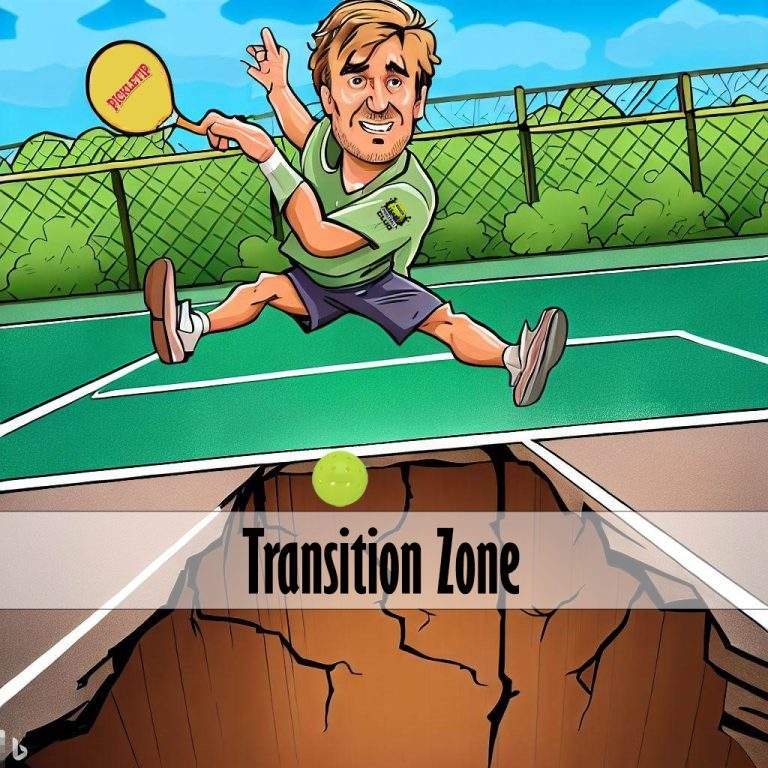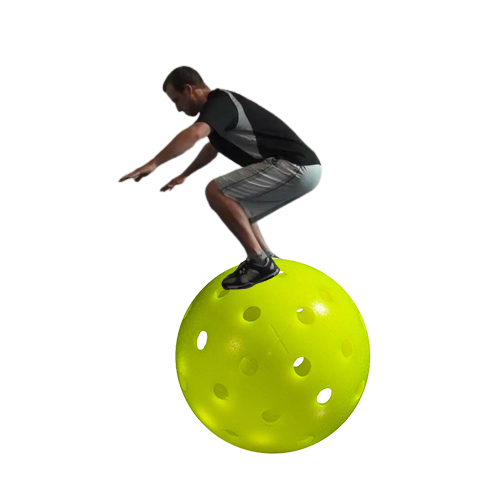Basics of Pickleball Guide
Grip, Shots, Swing, Footwork, and Shot Selection
If you’re new to pickleball, you might be wondering how to get started. This popular sport has been gaining traction in recent years, and for good reason. It’s a fun and fast-paced game that can be enjoyed by people of all ages and skill levels.
To help you get started, we’ve put together a guide to the basics of pickleball. In this article, we’ll cover everything from grip and types of shots to swing and shot selection. We’ll also give you tips on keeping the ball in play, being patient, and pushing instead of punching or hitting. So, let’s get started!
Grip
The first thing you need to know is how to hold your paddle. There are two main grips in pickleball: the eastern and the western grip. The eastern grip is more traditional and is similar to the grip used in tennis. The western grip, on the other hand, is more modern and is similar to the grip used in table tennis.
To use the eastern grip, hold your paddle with your non-dominant hand, and place your dominant hand on the handle with your index finger extended down the paddle. This grip is good for beginners and provides more control.
To use the western grip, hold your paddle with your non-dominant hand, and place your dominant hand on the handle with your thumb and index finger forming a “V” shape. This grip is good for more advanced players and provides more power (which is not always a good thing in pickleball).
Types of Shots
Furthermore, There are several types of shots in pickleball, including the serve, forehand, backhand, volley, and lob. The serve is the first shot you make and is used to start the game. The forehand and backhand shots are used to hit the ball over the net. The volley shot is used when the ball is hit before it bounces, and the lob shot is used to hit the ball high and deep.
Swing
When swinging your paddle, it’s important to keep your elbow close to your body and use your wrist to generate power. Make sure to follow through with your swing, extending your arm all the way out in front of you.
Footwork
Good footwork is key to being a successful pickleball player. Make sure to stay on the balls of your feet and move quickly and efficiently around the court. Anticipate where the ball is going and position yourself accordingly.
Shot Selection
When playing pickleball, shot selection is important. Don’t always try to hit the ball hard or smash it over the net. Instead, focus on keeping the ball in play and making your opponent make mistakes. Use angles to your advantage and aim for open areas on the court.
Keeping the Ball in Play
One of the keys to success in pickleball is keeping the ball in play. Don’t try to hit the ball too hard or take risky shots. Instead, focus on hitting the ball softly and accurately, and aim for the center of the court. If you keep the ball in play, your opponent is more likely to make a mistake.
Patience
Pickleball is a game of patience. Don’t rush your shots or try to force things to happen. Instead, be patient and wait for the right opportunities to make your move. Remember, the goal is to keep the ball in play and make your opponent make mistakes.
Pushing instead of punching or hitting
One common mistake beginners make in pickleball is trying to punch or hit the ball too hard. This can lead to mistakes and missed shots. Instead, focus on pushing the ball over the net, using your wrist to generate power. This will help you keep the ball in play and make it harder for your opponent to return the ball.
Angles
Once you develop more control, Angles are important in pickleball. By hitting the ball at an angle, you can make it harder for your opponent to return the ball. Aim for the corners of the court, or hit the ball cross-court to keep your opponent off-balance.
Shot Variety
Variety is important in pickleball. Don’t always use the same shots or hit the ball in the same way. Mix it up by using different types of shots, like lobs and drops, and hitting the ball at different angles. This will make it harder for your opponent to anticipate your moves and keep them off-balance.
Footwork
Good footwork is essential in pickleball. Make sure to stay on the balls of your feet and move quickly and efficiently around the court. Anticipate where the ball is going and position yourself accordingly. By having good footwork, you’ll be able to get to the ball faster and make better shots.
Shot Selection
Moreover, Shot selection is important in pickleball. Don’t always try to hit the ball hard or smash it over the net. Instead, focus on keeping the ball in play and making your opponent make mistakes. Use angles to your advantage and aim for open areas on the court. By making smart shot selections, you’ll be able to keep the ball in play and wear down your opponent.
Beginner Pickleball Tips
How do you play pickleball for beginners?
- Start with the basics: Focus on grip, footwork, and shot selection. Don’t try to do too much too soon.
- Practice your shots: Spend time practicing your forehand, backhand, volley, and lob shots. The more you practice, the better you’ll get.
- Play with others: Find other beginners to play with and practice your skills. You’ll learn more by playing with others than by practicing alone.
- Be patient: Remember, pickleball is a game of patience. Don’t rush your shots or try to force things to happen. Be patient and wait for the right opportunities.
- Have fun: Most importantly, have fun! Pickleball is a great way to stay active and meet new people. Enjoy the game and don’t take it too seriously.
People also ask:
What are 5 things you Cannot do in pickleball?
- You cannot hit the ball out of bounds. The ball must land within the boundaries of the court. (However, you are allowed to hit the ball while standing outside of the court, as long as the ball lands inside the court boundaries.)
- On the serve and the return of serve, you cannot hit the ball before it bounces. After the ball has bounced, either player can hit the ball before it bounces or after it bounces.
- If the ball hits the net and lands in the proper court boundaries, play continues. However, if the ball hits the net and does not make it over the net or lands outside the proper court boundaries, it is considered a fault.
- You cannot volley the ball from the non-volley zone. The non-volley zone, also known as the kitchen, is a seven-foot area on either side of the net. You are not allowed to hit the ball in the air while standing in the kitchen. However, you can step into the kitchen and hit the ball after it has bounced.
- You cannot hit the ball twice in a row. This applies to both singles and doubles play. If you hit the ball, your opponent(s) must hit the next shot. After your opponent(s) has hit the ball, you can hit the next shot, and so on.
As a beginner, learning the basics of pickleball can be overwhelming. However, by focusing on the grip, types of shots, swing, footwork, shot selection, and patience, you can quickly improve your skills and become a better player. Remember, pickleball is a game of patience, and it’s important to focus on keeping the ball in play and making your opponent make mistakes.
Pickleball Tips
Start with the basics, such as grip and footwork, and practice your shots regularly. Find other beginners to play with and have fun while improving your skills. By incorporating shot variety, angles, and smart shot selection, you’ll be able to keep your opponent off-balance and win more games.
Remember, pickleball is a great way to stay active and meet new people. Enjoy the game and have fun!








4 Comments